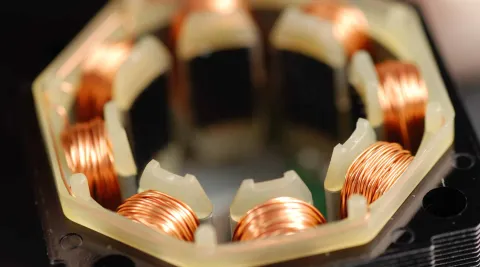May the Force Be With You
What do magnets and electromagnets have to do with particle accelerators and neutrino beams? How are magnetism, electricity, and movement related? Learn about the forces behind the DUNE experiment.
Curriculum module media

The Deep Underground Neutrino Experiment (DUNE) will consist of two neutrino detectors placed in the world's most intense neutrino beam. One detector will record particle interactions near the source of the beam, at the Fermi National Accelerator Laboratory in Batavia, Illinois. A second, much larger, detector will be installed more than a kilometer underground at the Sanford Underground Research Laboratory in Lead, South Dakota— 1,300 kilometers downstream of the source.
In this unit, students explore magnets and magnetic forces, permanent and temporary magnetism, and rotational & linear motion induced by magnets. Connections are drawn to the Earth itself as a giant magnet, with a north and south pole, and to the use of magnets within engineering applications. Electromagnets are central to the technology of sending a neutrino beam from Fermilab outside of Chicago to a detector at the Sanford Underground Research Facility in Lead, South Dakota.
May the Force Be With You-- Magnetism, Electricity and Movement